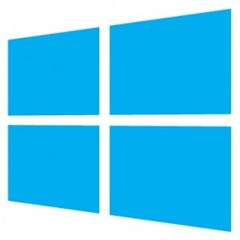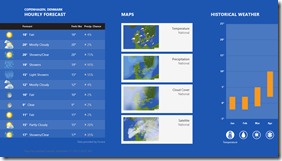by Dmitry Kirsanov
29. December 2012 08:24

Earlier this month, I wrote an introduction to Windows 8 Store for those who didn’t attend any course or online event, but would like to learn about it.
I met quite a few people so far, who wanted to go through Windows 8 development labs without knowing anything about how Windows 8 works, what are the new key components and so on. Needless to say, practice without even the basic theory is a waste of time.
So, this is the second part of about 10-part introduction to Windows 8 for Software Developers, and this time we’ll talk about the Metro Style application principles – what they are, how they work, what you should know first.
More...
by Dmitry Kirsanov
15. December 2012 05:16
 For a long time I had an itch to create an introduction to Windows 8 Metro Apps development with using either XAML or HTML 5 and JavaScript, but had no time to begin. So here it goes.
For a long time I had an itch to create an introduction to Windows 8 Metro Apps development with using either XAML or HTML 5 and JavaScript, but had no time to begin. So here it goes.
This will be the first part of (hopefully) many and I’ll begin with explaining the Windows Store – what it is, how it works and why I think it should matter for you.
More...
by Dmitry Kirsanov
16. November 2012 22:34
New technologies allow us to reach new goals. Different tool sets enrich scenarios and it becomes easy to do things we couldn’t dream about before. We implement features so fast, that sometimes we just can’t analyze the impact until the most loyal customers uninstall our app.
Once upon a time I’ve downloaded the mobile application which made my phone a toy that could be handed to a kid. Just like the Kid’s Corner in Windows Phone 8, but for Android. It contained a few badly written games, but it was not the reason why I uninstalled it.
In Android, just like in Windows 8, you can use other apps to enrich your application with their services. Connect to social networks, send e-mails and whatever else.
What this particular application did – it used my e-mail application to send e-mail to developer of that application, to automatically register me as it’s user. I realized that only when I’ve received an e-mail with the password and warm “thank you” for registration which I didn’t commit or solicit.
In some countries that’s crime which could cost you your business.
The morale is – sometimes you can’t do what you can do. You can use contracts in Windows 8 (or their analogs in Android and iOS), but you shouldn’t do anything that your customer is not aware of and can’t cancel before it happens.
by Dmitry Kirsanov
27. September 2012 06:32
Well, the “unexpected” should be put into quotes, because if you went through the Windows 8 training, then you have some ideas about how it works, but even if you did the training, some things are not clear until you crash at them at full speed.
As I mentioned before, Windows 8 now suspends applications which loose their focus. In Metro applications framework you, as developer, can deal with suspension notice and make sure you save the current state of the application, and you could use application manifest to create exception from the rule. Say, if your application is a media player or a browser.
However, it turns out that Metro applications are not the only ones to be suspended. More...
by Dmitry Kirsanov
24. September 2012 08:32
For some software companies, the .NET Framework 3.5 is the current production version. However, it was also very problematic release because of the deployment issues. Windows Vista machines didn’t have it installed by default, so many companies continued to use 2.0 as much as they could, but then Windows 7 had it installed by default, so it became the new standard. But Windows 8 changed it all. More...
by Dmitry Kirsanov
16. September 2012 21:00
 Is Windows 8 a new Windows Vista?
Is Windows 8 a new Windows Vista?
During last few days the first thing that comes to my mind every morning, is this question.
The few months before and after the release of Windows 8 is the period of unique opportunity, just like it happens with other new or fundamentally changed products. The amount of efforts you put during such period of time always pays more than the same amount of effort at a later time.
This year, Microsoft is publishing a whole range of new (very) expensive fundamental products. Windows 8, Windows Server 2012, System Center 2012, Office 2013, Visual Studio 11 with Team Foundation Server 11 and more. Some of these products don’t bring any significant opportunity, as user interface is the only change that affects most of it’s users. For example – Office 2013. It’s nice, it should work better, but there’s no real reason to upgrade.
However, Windows 8 is different. As Microsoft rightfully says, it was reimagined, and the problem is – they are not lying and it’s not a buzzword (yet). The changes they made to the very principles of how applications work – not just the looks, but even the life cycle of application – make it harder for the market to swallow. More...
by Dmitry Kirsanov
13. September 2012 20:02
 In some future articles I am going to use this term, as well as you’ll hear it more often, because it may turn into a buzzword soon. So I’ll explain it to make sure we’re on the same page in the future.
In some future articles I am going to use this term, as well as you’ll hear it more often, because it may turn into a buzzword soon. So I’ll explain it to make sure we’re on the same page in the future.
People are habit-driven. We invent something and then we are just following the path. We are building paths for ourselves and for other people, depending from what we do. Manuals, instructions, laws and policies – these are perhaps the biggest examples of rules we make, but there are others, which you follow without consent. Why do you pour coffee before milk?
Some of the rules and habits we have are perfectly reasonable. Like when you are taking your umbrella when you are expecting showers. Or the way you are using the elevator or doing any other routine in never changing principles. However, some rules outlive the reason why they were created. More...
by Dmitry Kirsanov
11. September 2012 09:44

When average developer is asked to work on the user interface of his application, he is doing everything that is in his power to not do anything about it.
As the result, we usually get some minor visual enhancements which may further impair usability, but look better during the weekly meeting presentation. In worst case scenario, though, we get something that looks like an echo from 90-s with non-standard windows and 3-D controls. Because your boss is dying to see something “apple style”, and so you deliver. More...
by Dmitry Kirsanov
20. April 2012 06:41
A few days ago Microsoft released beta of their new technology called User Experience Virtualization, or UE-V. The name implies that it has something to do with virtualization, but it’s just a buzzword. What UE-V does – it synchronizes user settings across workstations, in real time.
Imagine, that you have to log into multiple workstations, and what you want to have is the same settings of all applications you are using in your work. For example, spelling options in Microsoft Office, the layout of buttons, menus and colors – all the little pains that accumulates into the strong headache of roaming for some.
UE-V vs. roaming profiles
The roaming profile could be the answer, but for most of us it’s not. Some of us don’t even have the Active Directory profiles, but still desire the same user experience throughout the environment (translation to human language: every desktop of yours looks and behaves the same).
The difference with roaming is also in fact that in UE-V you only synchronize what you want to, not everything. So it works faster and has less space for errors.
More...
by Dmitry Kirsanov
14. November 2011 13:35
This one will be quite short.
Windows 8 comes with new tablet-oriented Metro graphical user interface. However, just like in previous versions of Windows, there is the possibility to revert to alternative start menu. In Vista and Windows 7 we had ability to switch back to Windows XP style of menu, now we have ability to switch back to Windows 7 style.
In order to do that, you need to switch one key in Windows registry, which is HKEY_CURRENT_USER\Software\Microsoft\Windows\CurrentVersion\Explorer\RPEnabled . This video shows how to do that:
Windows 8 Classic Start Menu
Previously we’ve discussed how to run Windows 8 on VMWare and what are the most interesting changes in Windows GUI for end-users.